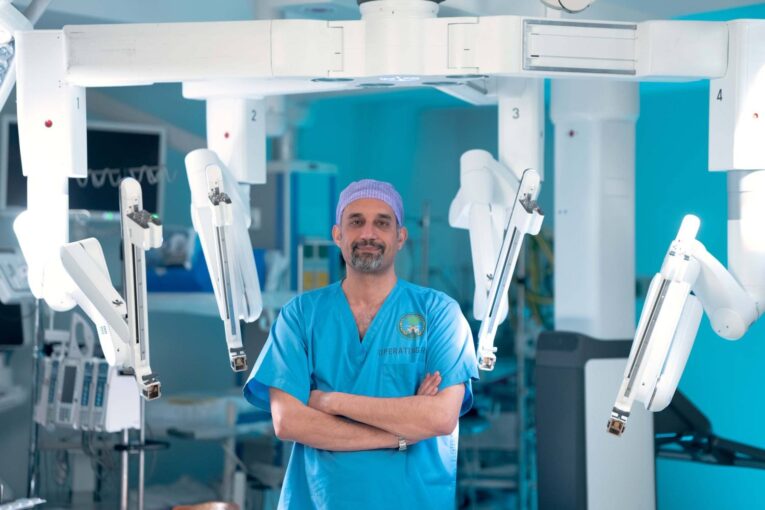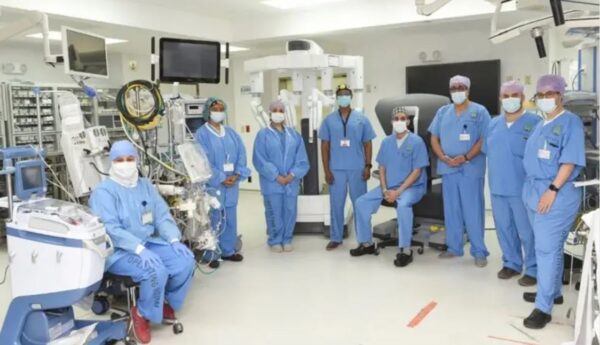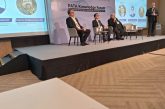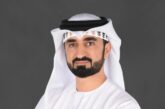
Dr. Feras Khaleil – Head of Cardiac Surgery and Director of the Robotics and Minimally Invasive Surgery Program
Arab Tourism News
As global demand for advanced healthcare grows, Saudi Arabia is emerging as a leader in medical innovation. In a historic achievement, Dr. Feras Khaliel and his team at King Faisal Specialist Hospital & Research Centre (KFSHRC) performed the world’s first fully robotic heart transplant on a 16-year-old patient with end-stage heart failure. This groundbreaking procedure reduces recovery times and surgical risks, showcasing KFSHRC’s commitment to advancing patient care.
&&&&&&&&&&&&&&&&&&&&&&&&&&&&&&&&&&&&&&&&&&
In this interview, Dr. Khaliel discusses the challenges and advantages of robotic heart transplantation, highlighting its transformative potential for cardiac surgery and reinforcing Saudi Arabia’s role as a destination for world-class medical treatments.
By : Ashraf El Gedawy
- How did you and your medical team prepare for this groundbreaking robotic heart transplant surgery? What steps were taken to ensure its success?
We knew that this surgery would be a game-changer, so preparation was key. It all started with weeks of detailed planning, from theory to virtual rehearsals. The team practiced the procedure seven times over three days in a simulation environment, refining each step to ensure accuracy. We developed a specialized surgical approach that allowed us to perform the transplant without opening the chest, which was crucial in reducing recovery time and potential complications. Each team member had a specific role, and we coordinated down to the smallest detail. It was this careful orchestration and collaboration that led to the surgery’s success. Maintaining exactness and minimizing risks were our top priorities, and I can confidently say that it was the harmony of the team that made this success possible.
- What were the main challenges you faced during the world’s first robotic heart transplant, and how did you overcome them?
Any new approach comes with its set of challenges, and this surgery was no exception. One of the biggest hurdles was moving away from the traditional, hands-on method of heart surgery to a fully robotic, minimally invasive approach. Instead of opening the chest as in conventional procedures, we used advanced robotic tools to access the heart through much smaller incisions. This required specialized skills and training, as robotic surgery demands a deep understanding of the system and the ability to troubleshoot any issues that may arise mid-procedure. Another challenge was ensuring full synchronization among the team—each member needed to be in perfect alignment with the technology to achieve the best results. We overcame these challenges through extensive preparation, constant communication, and a consistent focus on patient safety.

- What advantages did robotic technology bring to heart transplantation compared to traditional surgical methods, and how did that contribute to the procedure’s success?
One of the most exciting aspects of robotic technology lies in its ability to perform complex tasks with unmatched accuracy, especially in tight spaces where traditional methods might fall short. The robotic arms give us more control and flexibility, enabling us to work more comfortably in tight spaces that are harder to reach with human hands, and add to the overall efficiency of the procedure.
Another key advantage is the enhanced visibility. The technology gave us a much clearer view of the surgical site, making it easier to navigate through the intricate structures of the heart. This, combined with the robot’s efficiency, helped reduce the operating time, leading to a quicker recovery for the patient. These benefits certainly contributed to the success of the transplant and opened the door to exciting possibilities for future procedures.
- How do you foresee robotic heart transplantation impacting the future of cardiac surgery? Do you think it will become a standard practice in the medical field?
Robotic heart transplants are set to transform the future of cardiac surgery. I believe this technology will soon become a core component of how we perform these procedures. Beyond faster recovery, robotic systems enhance surgical efficiency, minimize risks like blood loss and infections, and contribute to better overall patient outcomes. At KFSHRC, we’ve already seen success with the first-ever robotic liver transplant, and I expect to see fully robotic application continue to grow in other transplant procedures. As technology advances, it has the potential to become the preferred method for many surgeons, increasing patient access and helping to alleviate pressure on healthcare systems.

- How did robotic assistance enhance the precision of the surgery and reduce potential surgical complications during the heart transplant?
Robotic assistance brought an added layer of accuracy to the procedure, allowing us to perform highly controlled movements that would be difficult to achieve manually. This additional precision helped reduce the margin for human error, making the surgery smoother and more efficient. Typically, heart transplant surgeries take between 6 and 12 hours, but with robotic assistance, we were able to complete this transplant in just two and a half hours. This significant reduction in time further minimized the risks associated with prolonged surgeries, contributing to a much more efficient overall process.

- What inspired you to take on this pioneering surgery, and how do you feel about its successful outcome?
My inspiration was driven by the potential to truly change patients’ lives. Performing a fully robotic heart transplant felt like a natural progression in advancing cardiac surgery, but the primary focus was always on improving patient care. It’s about more than just reducing recovery time—it’s about helping people get back to their families and loved ones faster, with less pain, and enabling them to return to their normal lives sooner. The fact that we were able to achieve this groundbreaking surgery first, globally, right here in Saudi Arabia is a source of immense pride, not just for myself but for the entire team that made it happen. It’s incredibly rewarding to know that we’ve made a significant step forward in heart transplantation and set a new global standard.
#SaudiArabia #RoboticHeartTransplant #MedicalInnovation #HealthcareLeadership #KingFaisalSpecialistHospital #HeartSurgery #RoboticSurgery #CardiacCare #FutureOfMedicine #ArabTourism








